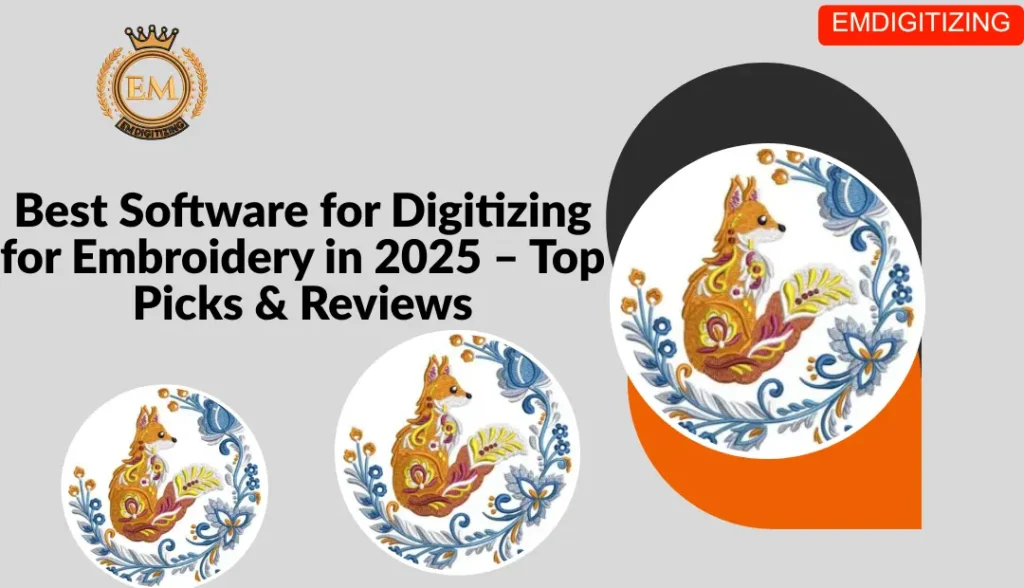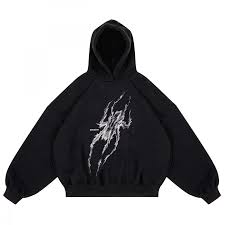
Best Software for Digitizing for Embroidery in 2025 – Top Picks & Reviews
Digitizing for embroidery has come a long way, transforming from manual punch cards to advanced AI-driven software. In 2025, designers, hobbyists, and professional embroidery businesses have access to powerful tools that make embroidery digitizing faster, more precise, and more creative than ever.
In this guide, we’ll explore the top embroidery digitizing software in 2025, their standout features, pricing, and how they can enhance your workflow. Whether you’re a beginner or an experienced digitizer, these tools will help you turn artwork into perfect stitch-ready files.
What Is Digitizing for Embroidery Software?
Embroidery digitizing software converts artwork—such as logos, illustrations, or text—into a stitch file that embroidery machines can read. This file determines stitch type, density, pathing, and thread colors.
Modern software not only offers automatic conversion but also advanced manual controls for precision editing. Features like stitch simulation, fabric-specific settings, and 3D previews help ensure the design looks perfect before production.
Why Choosing the Right Software Matters in 2025
In 2025, embroidery digitizing technology is more competitive than ever. Choosing the right software impacts:
-
Stitch Quality – The better the stitch path, the smoother the embroidery.
-
Speed – AI-powered automation saves time for bulk orders.
-
Design Flexibility – Advanced tools handle complex designs with ease.
-
File Compatibility – Supports multiple embroidery machine formats like DST, PES, EXP, and JEF.
-
Learning Curve – Beginner-friendly tools make digitizing accessible to all skill levels.
Top Software for Digitizing for Embroidery in 2025
1. Wilcom Embroidery Studio e4.5
Best for: Professional embroidery businesses
-
Features:
-
Industry-leading stitch quality
-
Vector-to-stitch conversion
-
Custom lettering and monogramming tools
-
AI-powered auto-digitizing
-
Advanced appliqué and sequin support
-
-
Pricing: Starts from $2,000 (license)
-
Pros: Reliable, extensive features, strong community support
-
Cons: Expensive, requires a learning curve
2. Hatch Embroidery 4
Best for: Small businesses & hobbyists
-
Features:
-
Drag-and-drop interface
-
Lettering and monogram designs
-
Auto and manual digitizing
-
Real-time 3D preview
-
Built-in learning tutorials
-
-
Pricing: From $149/month or $1,099 lifetime
-
Pros: User-friendly, great learning resources
-
Cons: Limited advanced editing compared to Wilcom
3. Brother PE-Design 11
Best for: Brother machine owners
-
Features:
-
Optimized for Brother embroidery machines
-
130 built-in fonts
-
Photo-to-stitch feature
-
Appliqué creation wizard
-
-
Pricing: Around $1,000
-
Pros: Excellent for Brother users, intuitive interface
-
Cons: Limited compatibility with non-Brother machines
4. Embrilliance Essentials
Best for: Beginners on a budget
-
Features:
-
Simple editing tools
-
Merge designs
-
Resize and recolor stitches without distortion
-
Runs on both Windows and Mac
-
-
Pricing: $149 one-time
-
Pros: Affordable, lightweight software
-
Cons: Lacks advanced digitizing features
5. Ink/Stitch (Free & Open Source)
Best for: Designers who prefer open-source tools
-
Features:
-
Integrated with Inkscape vector editor
-
Custom stitch settings
-
Free to use and modify
-
Supports multiple machine formats
-
-
Pricing: Free
-
Pros: No cost, flexible customization
-
Cons: Steeper learning curve for beginners
6. Sierra Embroidery Office
Best for: Complex commercial embroidery
-
Features:
-
Multi-head machine optimization
-
Sequin, chenille, and cording support
-
3D puff embroidery tools
-
Barcode printing for design tracking
-
-
Pricing: Custom quotes based on features
-
Pros: Very powerful for industrial use
-
Cons: High price, advanced setup
Key Features to Look for in 2025
When choosing embroidery digitizing software, ensure it has:
-
Auto-Digitizing Tools – Saves time for bulk designs.
-
Manual Editing – For fine-tuning stitches.
-
Fabric Presets – Adjusts stitch density for different materials.
-
Multi-Format Export – Works with any machine brand.
-
Learning Support – Tutorials and community forums.
AI & Cloud Trends in 2025’s Embroidery Software
-
AI Pattern Recognition – Automatically detects stitch-friendly designs.
-
Cloud Collaboration – Share designs with clients in real-time.
-
Mobile Previews – Check and approve designs from your phone.
-
Fabric Simulation – Visualize how stitches behave on different fabrics before production.
Which Software Should You Choose?
-
For Beginners: Embrilliance Essentials or Hatch Embroidery 4
-
For Professionals: Wilcom Embroidery Studio or Sierra Embroidery Office
-
For Budget Users: Ink/Stitch
-
For Brand-Specific Users: Brother PE-Design 11
Conclusion
In 2025, the best software for digitizing for embroidery combines automation, precision, and flexibility. Whether you’re creating designs for personal projects or running a high-volume embroidery business, the right tool can save you hours of work and ensure flawless stitch quality.
If you want a fast, reliable, and professional embroidery digitizing service without investing in expensive software, Emdigitizing can handle your designs, ensuring perfect machine-ready files every time.
FAQs
Q1. Can I digitize embroidery designs without software?
No. You need embroidery digitizing software to convert artwork into a stitch file that machines can read.
Q2. Which is the easiest software for beginners?
Hatch Embroidery 4 and Embrilliance Essentials are considered the most beginner-friendly in 2025.
Q3. Can I use free software for embroidery digitizing?
Yes, Ink/Stitch is a free option, but it has a learning curve and fewer automation features compared to paid tools.
Q4. Do I need separate software for every embroidery machine?
Not necessarily. Most professional software supports multiple file formats, making it compatible with various machine brands.
Q5. How much should I budget for embroidery digitizing software in 2025?
Prices range from free to $2,000+, depending on features and professional needs.


